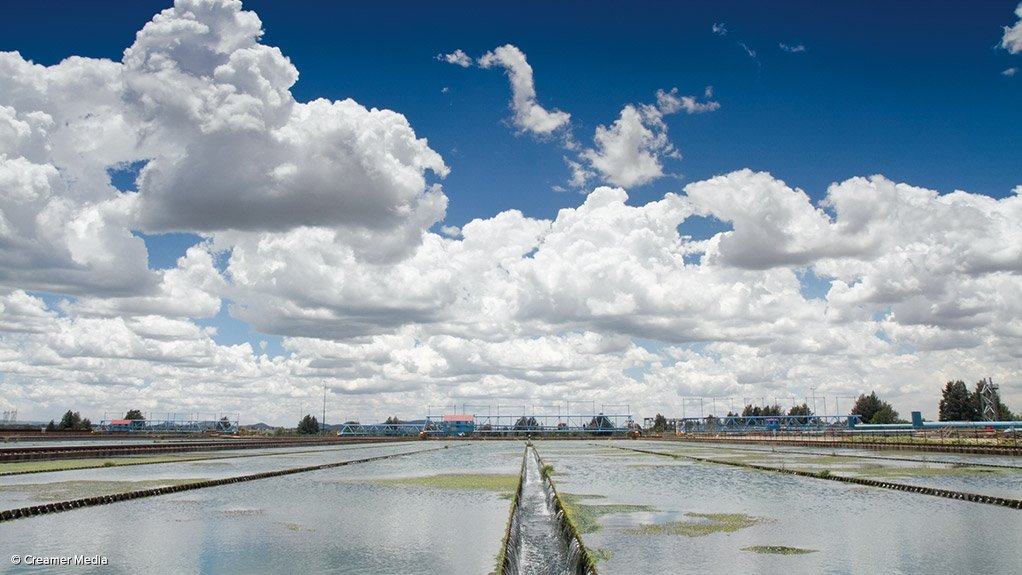As Rand Water increases its abstraction of water beyond its licence, it is pleading with consumers to use water wisely as the water it is currently over abstracting from dams needs to last multiple seasons and not just one.
The water trading entity, on average, supplies 4 642-million litres of water a day to municipalities, with a capacity to peak at 5 036-million litres a day, which is beyond its abstraction licence, to ensure 17.9-million consumers across four provinces are provided with water.
The Department of Water and Sanitation (DWS) temporarily increased Rand Water’s bulk water allocation as an emergency measure to address water shortages in South Africa’s economic hub.
The self-funded bulk water trading entity, with more than a 3 000 km interconnected network, has, year-on-year produced more water than has been budgeted for as it delivers bulk water supply to 18 municipalities, which accounts for 80% of water use as it reticulates and distributes to consumers.
In recent weeks, consumer water demand, particularly across Gauteng, has surged, reaching as high as 300 litres per person a day, with higher non-drinking water use, well above the worldwide average of 173 litres and South Africa’s average of 233 litres a day.
Just in the first quarter of 2023, water use climbed 5.2%.
This high demand amid a heat wave with late rainfall, in addition to excessively high nonrevenue water and leaks, with a loss of up to 40% in the distribution system, is placing strain on Rand Water’s ability to keep apace and ensure a buffer at its reservoirs.
“Every suburb has water,” said Rand Water CEO Sipho Mosai. However, he noted that, with low-lying areas using excess water for non-drinking purposes, high-lying areas faced shortages, owing to an inability to pressurise water supply upwards as reservoirs were depleted.
Further, he said that should the country experience a drought, there needed to be enough water in the dams to feed the reservoirs during any potential dry period.
At the rate water is being consumed, there will be no buffer for next season, despite the dams currently being full.
“The water we have will not last until next season,” he told media during a briefing at the entity’s headquarters on Friday, noting that the current high water requirements and over abstraction were just not sustainable.
“We have provided and we have planned for the demand; however, we need to use what we have responsibility,” he says, citing a drop in water use during the rainfall this week as there was no need to use drinking water for irrigation.
“The easiest way out is to use less water or build more infrastructure now and pay more money for water.”
Rand Water has a significant pipeline of infrastructure projects designed in line with predicted demand; however, the current demand requires unplanned additional infrastructure, such as dams, should it continue. This will cause the price of water to surge, an extra cost already cash-strapped consumers will not be able to shoulder.
The reservoirs are also required to be at a safe zone in case of power outages, which is also causing significant concern for the water trading entity, as following a power outage, it takes about four to five days for a reservoir to recover.
He cited the recent power outages that left many Johannesburg suburbs without water.
On September 23, a power failure at Rand Water’s Vereeniging water works resulted in a 50% reduction in bulk water supply to the Eikenhof pumpstation, impacting the high-lying areas of the Crosby, Brixton and Hurst Hill Supply zones.
Before the system could recover fully, Rand Water’s Vereeniging works experienced a total power failure on September 25 just after midnight, following which, on September 29, Rand Water experienced a pump trip at their Eikenhof system for about three hours, reducing the pump station capacity by 40%.
Further, Rand Water had a power supply issue on September 30 at their Zuikerbosh purification works, which again had a 60% impact on the supply to Eikenhof for about six hours.
By October 3, Rand Water took 200 Ml/day supply from the Eikenhof system to boost their Palmiet system which was at a critical stage.
Eikenhof Substation, which supplies Rand Water, is currently supplied power by City Power from the bulk station in Fordsburg through a switching station in Orlando.
City Power is working with Joburg Water to ensure the supply of water is not interrupted, while Rand Water is considering options for self-power generation, including hydropower and solar.
A Water Room committee, comprising the DWS, Rand Water and all Gauteng municipalities as well as the business sector, is also being set up to provide a holistic coordination, provision and management of the water system in the province.
EMAIL THIS ARTICLE SAVE THIS ARTICLE ARTICLE ENQUIRY
To subscribe email subscriptions@creamermedia.co.za or click here
To advertise email advertising@creamermedia.co.za or click here











